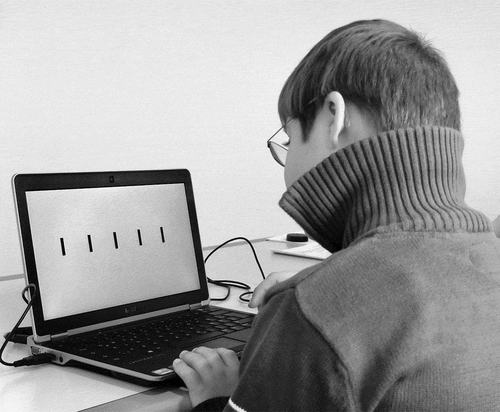Figures & data
Figure 1. 24 arrangements, each presented exactly 250 milliseconds on the computer screen, in the experiment ‘dice point images’ (and higher numbers, which are arranged in a similar pattern).
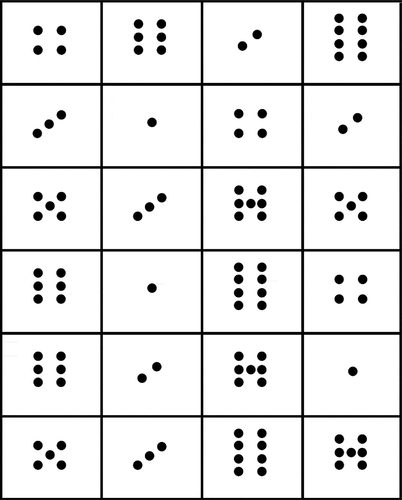
Figure 2. 16 arrangements, each presented exactly 250 milliseconds on the computer screen, in the second experiment ‘interference pictures‘.
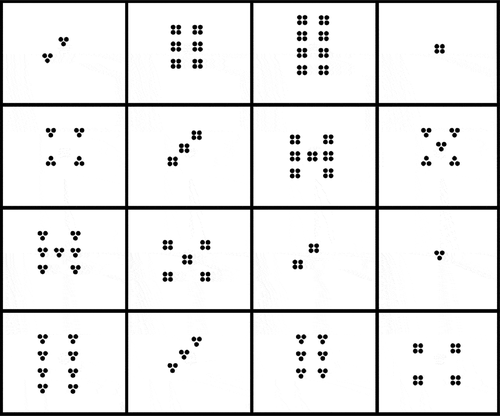
Figure 3. 28 arrangements, each displayed on the computer screen for exactly 250 milliseconds, in experiment 3 ‘clouds of squares’.

Figure 4. 28 arrangements displayed exactly 250 milliseconds on the computer screen in experiment 4 ‘strips of dashes’.

Figure 6. Relative frequencies of participants with three correct indications of the number of points in experiment 1 ‘dice point images’. Abscissa: number of points. Ordinate: percentage of participants with three correct indications of the number of points. (The differences are statistically highly significant, with an error probability of p < 0.001, Mann-Whitney test, Moses test, Kolmogorov-Smirnov test in two samples and Wald Wolfowitz test.).
Table 1. The differences between the number of correct estimates of participants in the experimental and in the comparison group in experiment 1 (dice point images)
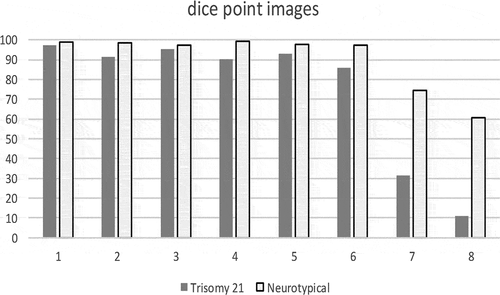
Table 1. The differences between the number of correct estimates of participants in the experimental and in the comparison group in experiment 1 (dice point images)
Figure 7. Relative frequencies of participants with correct identification of numbers of points in experiment 2 ‘interference pictures’. Abscissa: number of points. Ordinate: percentage of participants with correct indications of the number of points. (The differences are statistically highly significant, with an error probability of p < 0.001, Mann-Whitney test, Moses test, Kolmogorov-Smirnov test in two samples and Wald Wolfowitz test.).
Table 2. The differences between the number of right estimates of participants in the experimental and in the comparison group in experiment 2 (interference pictures)
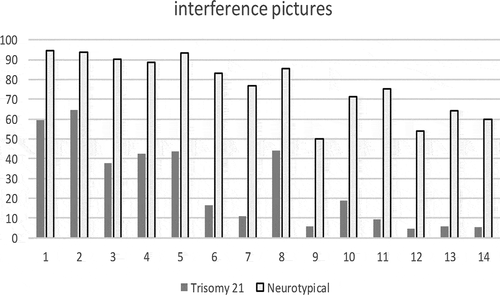
Table 2. The differences between the number of right estimates of participants in the experimental and in the comparison group in experiment 2 (interference pictures)
Figure 8. Relative frequencies of participants with correctly identified numbers in experiment 3 ‘clouds of squares’. Abscissa: number of elements of the disordered sets. Ordinate: percentage of participants with correct indications of the number of elements of the disordered quantity. (The differences are statistically highly significant, with an error probability of p < 0.001, Mann-Whitney test, Moses test, Kolmogorov-Smirnov test in two samples and Wald Wolfowitz test.).
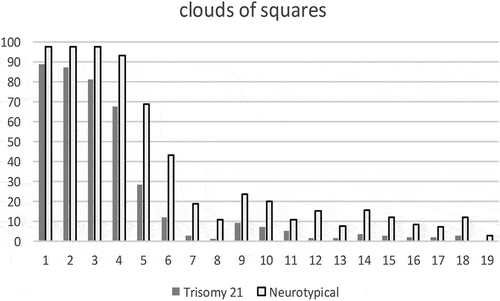
Table 3. The differences between the number of right estimates of participants in the experimental and in the comparison group in experiment 3 (clouds of squares)
Figure 9. Relative frequencies of participants with correct indications of the number of dashes in experiment 4 ‘strips of dashes’. Abscissa: number of dashes. Ordinate: percentage of people with correct indications of the number of dashes within the row. (The differences are statistically highly significant, with an error probability of p < 0.001, Mann-Whitney test, Moses test, Kolmogorov-Smirnov test in two samples and Wald Wolfowitz test.).
Table 4. The differences between the number of right estimates of participants in the experimental and in the comparison group in experiment 4 (strips of dashes)
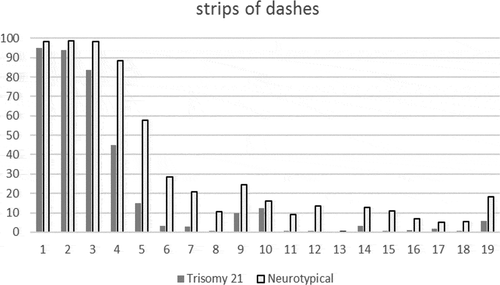
Table 4. The differences between the number of right estimates of participants in the experimental and in the comparison group in experiment 4 (strips of dashes)

